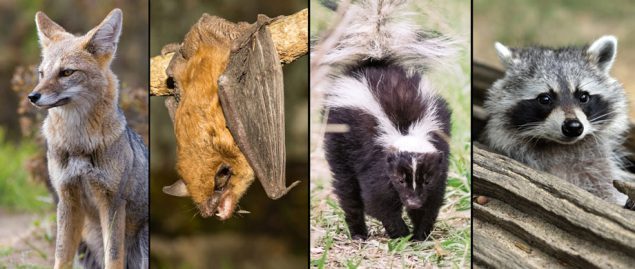Most bats do not have rabies. According to the US Centers for Disease Control and Prevention (CDC), even among bats submitted for rabies testing, only about 6% had rabies. Rabies can only be confirmed in a laboratory but any bat that is active by day or is found in a place where bats are not usually seen like in your home or on your lawn or attic could be rabid. A bat that is weak and unable to fly could potentially be sick.
A man died of rabies in Limoges, in southwest central France, most probably after being bitten or scratched by a bat, as reported recently by the Institut Pasteur. This is a first in mainland France. The sixty-year-old succumbed to encephalitis, an inflammation of the brain of unexplained origin, in August 2019. A partnership established between the Necker hospital and the Pasteur Institute, aimed at identifying the causes of undocumented encephalitis, led to the genetic analysis of post-mortem samples. These analyzes at Necker Hospital in Paris showed that he had contracted a lyssavirus, European Bat LyssaVirus type 1 (EBLV-1), sheltered by bats.
“This shows that there are cases of rabies that we can miss”
“It is thanks to this retrospective diagnosis that this case was brought to light. This shows that there are cases of rabies that can be missed, ” explained Laurent Dacheux, deputy head of the national reference center for rabies at the Institut Pasteur.
“The trace of this virus was identified at that time, in November 2020. In the midst of the coronavirus , and this discovery went unnoticed”, continues Laurent Dacheux. This exceptional case was finally mentioned in a popular science article on the Mesvaccins.net site and highlighted by the regional daily Le Populaire du Center .
In contact with bats
“It has been thirty-five years since a death of this type has occurred in the world. And in mainland France, this is indeed a first,” assures Laurent Dacheux.
In 2019, a 21-year-old man died of rabies after coming into contact with a bat on Vancouver Island in the Canadian province of British Columbia. Health official Bonnie Henry confirmed that the man came into contact with a rabid bat in mid-May, began showing symptoms six weeks later, and died in July 2019.
Why don’t people get the rabies vaccine?
Rabies is a fatal disease. Each year, tens of thousands of people are successfully protected from developing rabies through vaccination after being bitten by an animal like a bat that may have rabies.
In some cases, people who died of rabies knew they were bitten by a bat. They did not go to a doctor to seek medical help because they were not aware that bats can have rabies and transmit it through a bite. In other cases, it is also possible that young children may not fully awaken due to the presence of a bat (or bite) or may not report a bite to their parents. Most bats have small teeth which may leave marks that can disappear quickly.
Which animals can be infected with rabies?
Any mammal can contract rabies. Rabies is most often reported in mammals that tend to come in contact with humans or live near human settlements, including bats, raccoons, skunks, and foxes. Cases of rabies have also been reported in deers, woodchucks, mongoose, opossums, coyotes, wolves, and monkeys. Pets and domesticated animals that are mammals can easily get the disease if bitten by another animal that is already infected. Cases in pets and other domesticated animals have been reported in dogs, cats, cows, horses, and rabbits.

If you are bitten by an animal – or if infectious material (such as saliva) from an animal gets into your eyes, nose, mouth, or a wound – it is important to wash the affected area thoroughly with soap and water and get medical advice immediately. Whenever possible, the animal should be captured and sent to a laboratory for rabies testing.






